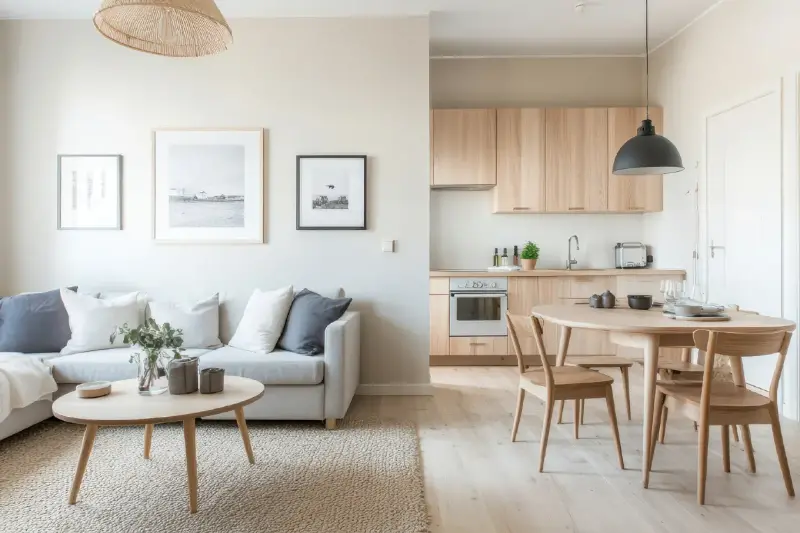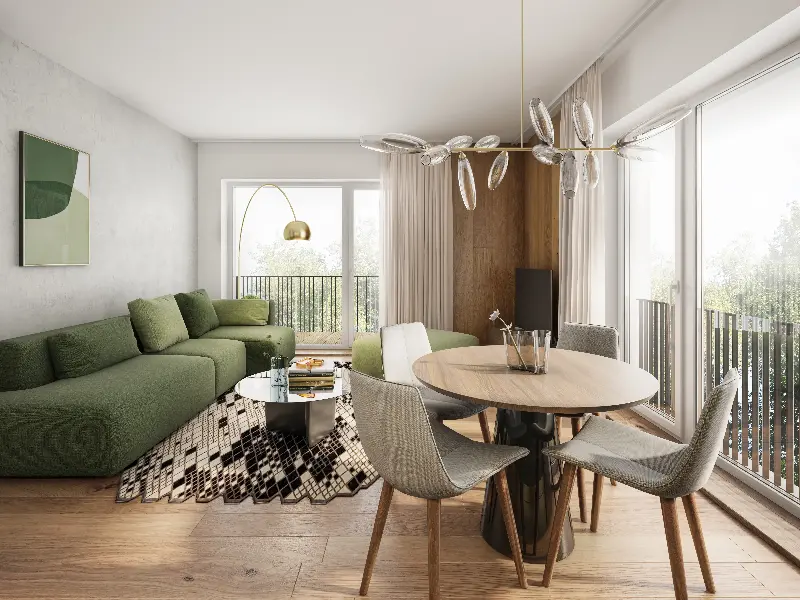Tiny spaces, big possibilities: that's the paradox at the heart of small room decoration. It’s easy to feel boxed in when living in a compact apartment or navigating a snug bedroom, but clever interior strategies can unlock a sense of grandeur right in your cosiest corners. The art of space-savvy decoration blends creativity, smart choices, and visual tricks that are delightfully easy to master. Whether you’re a city dweller trying to maximise every inch or simply love the idea of minimal but impactful living, these genius tricks will help your tiny rooms appear expansive, functional, and beautiful.

Let There Be Light: Mastering Illusions With Lighting
The magic of good lighting can’t be overstated. Natural light instantly makes any room feel fresher and more open, so push back those heavy drapes and let the sunshine in. If your window’s view is less than desirable, try using sheer curtains that add privacy without blocking light. For rooms starved of daylight, multiple light sources can mimic the sun’s effect. Swap a single overhead lamp for several soft-glow LED fixtures or wall-mounted sconces placed at varying heights. These layers of light stretch the dimensions of a room, while the absence of harsh shadows helps blur the boundaries, making the space feel unconfined.
Reflective surfaces also play a crucial role. Mirrors are the small-room decorator’s secret weapon. Placing a large mirror opposite a window multiplies the available light and visually doubles the space. Mirrored furniture pieces or glossy tiles subtly bounce light around, casting a brighter ambience that quietly adds depth.
Colour Chemistry: Using Hues To Open Up A Room
Colour transforms perception. Lighter tones like soft whites, pastels, and pale greys on walls magnify roominess by reflecting light. But don’t be afraid of colour altogether. Strategic accent walls in cool hues—think navy or sage—can recede visually, stretching out the room’s edges. A monochromatic colour scheme (using varying shades of one colour) creates a seamless flow that trick the eye into not noticing where one area ends and another begins.
Even the ceiling deserves thoughtful attention. Painting the ceiling just a shade lighter than your walls draws the eye upward, subtly increasing the room’s perceived height. If you’re feeling bold, vertical stripes on walls or curtains elongate your space, while horizontal stripes can extend its width. These playful touches keep things fresh and visually engaging.

Furnishing With Finesse: Less Bulk, More Function
Choosing furniture for a compact room is all about proportions and adaptability. Go for pieces with slim profiles, open legs, and light or translucent materials: think airy wire chairs, glass tables, or acrylic shelves. Multi-purpose items are pure gold in tight spaces. Ottomans that hide storage, fold-away desks, and modular sofas that adapt as needed are key investments.
Arranging your furniture isn’t simply about squeezing in what you own. Leave breathing room around major pieces instead of pushing them all against the walls. This negative space can actually make the centre of the room feel grander. If you’re dealing with a living room, try floating a sofa and anchoring it with a light rug; in a bedroom, opt for a raised bed to keep the floor visible and uncluttered.
Vertical Vision: Looking Upwards For Space Solutions
When square footage is limited, it’s time to think vertically. Walls are your underused allies. Floating shelves, tall bookcases, and wall-mounted cabinets maximise storage without encroaching on valuable floor space. Hanging plants at different heights adds life and draws the gaze up, which makes the ceilings feel higher.
If possible, install tall, slender wardrobes or create vertical gallery walls with art or mirrors. Bunk beds or lofted beds over desk areas are fabulous for children’s rooms or student flats. Hooks, rails, and magnetic organisers can turn the back of a door or even a narrow hallway into a mini wardrobe or a sleek pantry.
Optical Magic: Smart Patterns And Transparent Touches
Smart visual tricks help blur the physical limits of a room. Clear or lucite furniture is invisible to the eye but fully functional, reducing visual clutter. Similarly, rugs play an important role: extending a patterned rug slightly under furniture creates a sense of expansiveness where individual pieces seem to float together in a unified space.
When it comes to patterns, keep prints on smaller textiles like throws or cushions, and favour large, simpler designs for bedding or curtains. This reduces busy-ness, drawing the eye calmly through the space. Large-scale art, surprisingly, works well in small rooms, acting as an impressive focal point and drawing attention to one statement feature rather than myriad tiny trinkets.
Personalisation Without Clutter: Minimal Treasures, Maximum Charm
A small space doesn’t have to mean bland or characterless. The trick is to be selective and intentional with your décor. Opt for a few larger (but not bulky) decorative items instead of many small knickknacks. For example, a striking vase or an oversized framed photograph can make more visual impact and keep clutter at bay.
Textiles—like a plush throw, bright cushion, or an artful rug—can add texture and warmth without taking up precious space, while open shelving can display your personality if you curate what’s visible. Think: a stack of books, a potted plant, and one cherished memento.
Small rooms are a canvas for creativity, not a limitation on style. Clever design choices, the right lighting, and imaginative storage prove that when it comes to home, size really isn’t everything. Through the art of space-savvy decoration, any tiny room can become the most surprisingly expansive and beautiful spot in your home.
